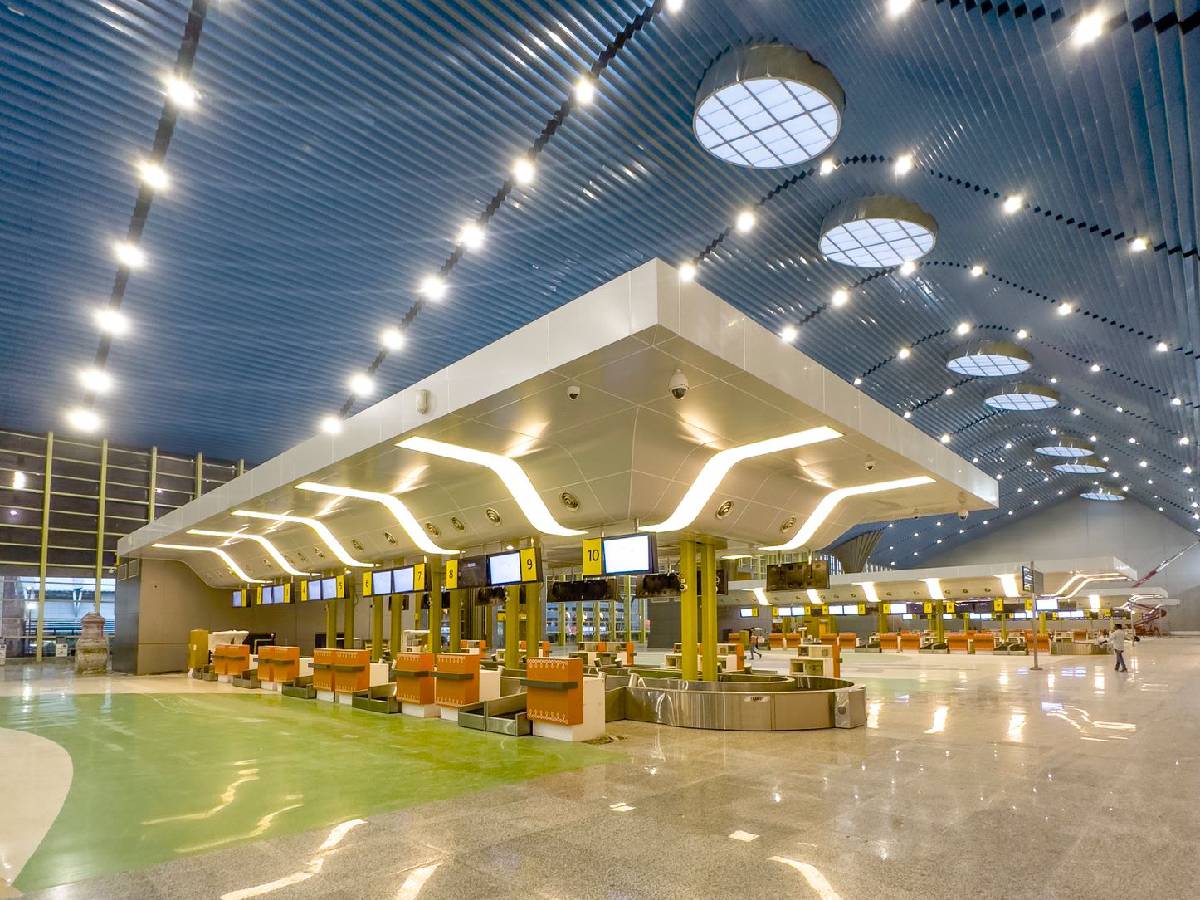Chennai Airport Under Scanner! Aviation Experts Flag Fire Safety Violation – Here’s What Happened in 2023

Chennai Airport Under Scanner! Aviation Experts Flag Fire Safety Violation – Here’s What Happened in 2023
Singh emphasised the potentially dangerous effects of shut doors during an emergency by drawing comparisons to the Uphaar Cinema catastrophe when barred entrances contributed to a high casualty count.
Aviation safety experts have raised the alarm about a possibly major fire safety breach at Chennai’s Anna International Airport’s recently opened terminal. The Airport Authority of India (AAI) and the airport director have received written communications expressing their concerns.

The experts claim there is a severe problem with the emergency exits in the terminal, which they claim have been “sealed”—a decision made for security reasons. These precautions have, however, sparked worries that the blocked exits might be disastrous in an emergency, much like the fatal 1997 Uphaar Cinema fire that killed 59 people.
The NGO Safety Matters Foundation, led by Capt. Amit Singh has taken the initiative to tackle this problem. He most recently communicated with AAI, the director of Anna International Airport, and the Chennai fire department to bring attention to the alleged fire safety violation.
According to Singh, the security hold area, notably in the international departure hall of the recently opened New Integrated Terminal Building, needs to adhere to the required fire safety standards. He said that although there are escape signs, they only open locked Emergency Access doors, and no warning or backup escape is available in an emergency.
Singh highlighted the potentially disastrous effects of shut doors during an emergency by drawing comparisons with the Uphaar Cinema catastrophe when closed entrances contributed to a high casualty count. He pointed out that dying from smoke inhalation usually happens quickly, in a matter of minutes.

Singh’s worries were reinforced by renowned aviation safety expert Mohan Ranganathan, a Civil Aviation Safety Advisory Committee (CASAC) member, an organisation established by the Civil Aviation Ministry. Ranganathan emphasised that he had previously expressed his concerns in tweets by pointing out infractions in the main building where various EXIT gates are shut.
According to an airport source, there are eight fire exit doors in the new terminal, but keeping them unlocked for fire exit purposes might jeopardise airport security. The source said that more security guards would be needed to watch over these exit doors, possibly signalling an unwillingness to dedicate staff to this job.
Despite the shocking facts, AAI, the airport director, and the Chennai fire department have yet to respond. Aviation safety professionals are still pushing to correct this possible threat to guarantee the safety and well-being of travellers and employees at Chennai Airport.
Chennai, one of India’s major metropolitan cities, recently witnessed an alarming situation at its primary international airport. Chennai International Airport, a crucial air transit hub for the southern region of India, came under intense scrutiny following accusations of significant fire safety violations. Here’s a detailed analysis of what transpired in 2023.
Chennai International Airport, handling over 20 million passengers annually, boasts state-of-the-art facilities and has always maintained a relatively good safety record. However, the recent controversy has cast a shadow on its reputation, leading to questions about its operational standards and safety compliances.

The incident unfolded when an independent aviation body conducted an unannounced mock drill in early 2023. Several lapses in the fire safety mechanisms were flagged during this drill, causing immediate concern among aviation experts and authorities alike.
Some fire extinguishers were found to be past their expiry date, and others were not readily accessible during the drill. This situation can prove detrimental during an actual emergency.
The signage indicating emergency exits could have been more visible in certain parts of the airport. This lapse could lead to chaos during the evacuation, costing precious minutes.
While the airport staff are supposed to undergo periodic training sessions, it became evident during the drill that many needed to be made aware of the basic protocols to follow in a fire emergency.
In specific sections of the airport, the fire alarms malfunctioned or were not loud enough to alert the staff and passengers, making it a grave issue.
The revelations made during the mock drill raised alarms in the aviation industry, given Chennai International Airport’s pivotal role in the country’s air transport system. Immediate reactions included:
- Government Inquiry: The Ministry of Civil Aviation ordered a comprehensive investigation into the reported lapses.
- Increased Scrutiny: Other airports across the country, taking note of the situation in Chennai, ramped up their safety checks, ensuring their fire safety mechanisms were up to mark.
- Passenger Concerns: A temporary dip in passenger confidence was observed, with many voicing their concerns over safety standards at the airport.
- Industry Repercussions: Several airlines using the airport as a hub held emergency meetings with airport authorities to discuss measures and understand the steps to rectify the lapses.
All outdated firefighting equipment was replaced within a week of the drill. A rigorous training schedule was rolled out, focusing on firefighting, emergency evacuation, and safety procedures.
The malfunctioning alarms were identified and replaced, and a full audit of the safety systems was initiated. The airport authorities released an official statement detailing the steps taken to address the concerns and reassure passengers of their commitment to safety.

The incident at Chennai International Airport is a stark reminder of the importance of regular safety checks and updates. While the swift corrective actions taken by the authorities are commendable, it’s vital for all stakeholders, from aviation bodies to individual airports, to ensure such lapses are preempted and not merely reacted to. The safety of millions of passengers depends on it.




